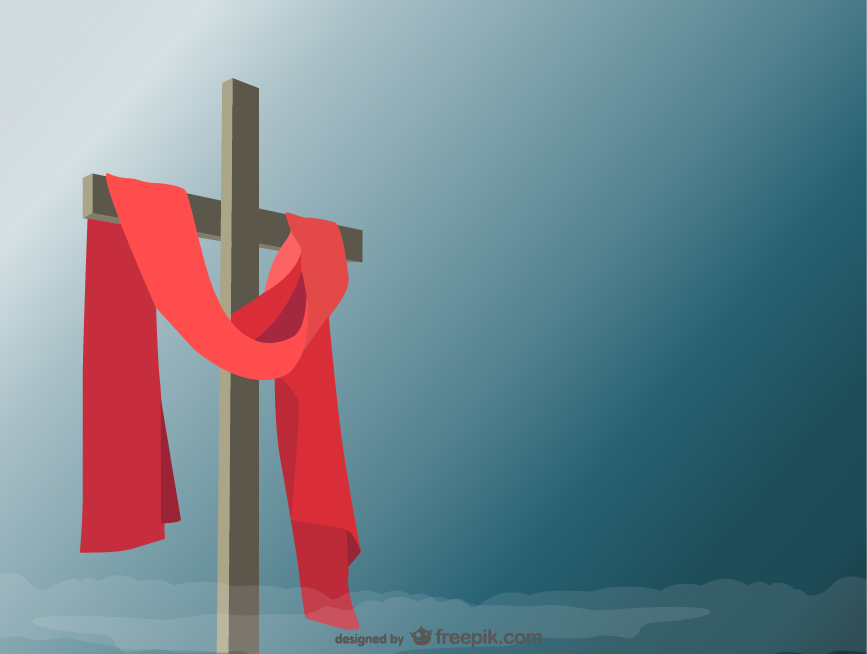 Image Designed by Freepik
Image Designed by Freepik
If you ride by Pleasant Hill Christian Church during Holy Week, you will notice the draping on the cross in front of the church. This is a tradition that we began in 2016, and which we renew again this year.
"So what does it mean?" you may be asking. The colors of the cloth used to drape a cross can mean several things, depending on your faith tradition. Pleasant Hill is an independent Christian Church, so there is no specific tradition that we are mandated to uphold. As a result, here's what the colors mean to us.
The Red Draping
On Palm Sunday, we drape our cross with red fabric. Red is often associated with passion, and the week from Palm Sunday through Easter Sunday is often called Passion Week. This is because of the passion expressed by Jesus Christ when he did the Father's Will by taking on the sins of the world, and dying on the cross as atonement for those sins.
In Matthew 27:28, we see that after being sentenced to death, the Roman soldiers mocked Jesus, by putting "a scarlet robe on Him." It is true that Mark 15:16 and John 19:3 speak of the Roman soldiers having put purple clothing on him. But as Eric Lyons points out in an article at Apologetics Press, it is likely that they were using different terms to refer to the same color. Nevertheless, the red draping also reminds us of the public humiliation that Christ endured for us.
Regardless of what color one chooses to believe the Roman soldiers placed on Jesus, no-one can dispute that the blood Jesus shed on the cross was red. It is by that blood that our sins are washed away. So most important of all, the red draping serves to remind us of the blood Jesus shed for our sins. (Matthew 26:28)
The Black Draping
Good Friday morning we will drape our cross with black, and it will remain that way through Saturday.
Black is associated with death or mourning, reminding us that Christ literally died a physical death on the cross. (Matthew 27:50, Mark 15:37, Luke 23:46, John 19:30-35)
It also represents the darkness that fell over the land from the sixth hour to the ninth hour. (Matthew 27:45, Mark 15:33, Luke 23:44-45)
And finally, the black draping reminds us that Christ took on our sins when he was nailed to the cross. As Paul explains in 2 Corinthians 5:21, "For He made Him who knew no sin to be sin for us, that we might become the righteousness of God in Him." But in taking on that sin, Jesus was separated from the Father. This is seen in Mark 15:34 when "Jesus cried out 'Eloi, Eloi, lama sabachthani?' which is translated, 'My God, My God, why have You forsaken Me?'"
The White Draping
On Easter Sunday morning we will drape our cross with white.
Among other things, this represents the linen cloths Jesus left lying undisturbed in his tomb when he arose (John 20:3-8).
Most importantly, the white represents our state when we put our faith in Christ and his death, burial and resurrection as atonement for our sins. In our natural state, we are stained by our sin. Yet if we put our faith in Jesus, the blood he shed washes away our sins, leaving us whiter than snow -- whiter than the cloth that drapes our Cross on Easter.(Isaiah 1:18, 1 John 1:9)
Home